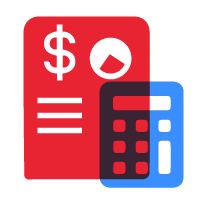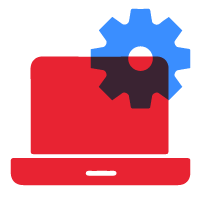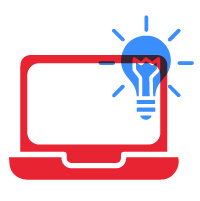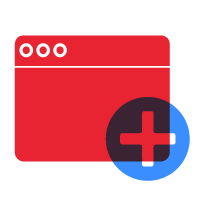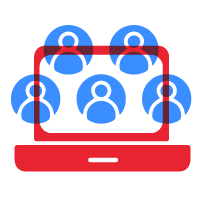Have you ever wondered how technologies like computers achieve higher levels of self-direction? How come they have the capability to interpret? They need artificial intelligence and machine learning algorithms to process information the way human brains do. People today use these algorithms for several purposes, including for efficiency and personalization. They depend on data annotation tools to be able to deliver on these commitments.
Let’s get into it: Data annotation entails the organization of data in order to instruct artificial intelligence to make decisions in the future. In this article, we’ll talk about data annotation, why it is important, the best ways to annotate data, top-notch data annotation techniques and tools, how to select a data annotation tool, and its importance to machine learning and artificial intelligence.
What is Data Annotation?
Computers have no capacity to interpret visual data in the same way that human brains can. For a computer to make decisions, it needs to be told what it is understanding as well as given context. These links are made via data annotation.
Making content that is available in different formats, such as text, videos, and photographs, machine-readable is the process of data annotation.
Why is Data Annotation Important?
The performance of algorithms is directly impacted by the highly accurate ground truth produced by data annotation. For models based on machine learning and artificial intelligence to recognize and analyze incoming data accurately, annotated data is essential.

The Best Way to Annotate Data
When beginning an annotation, it is important to choose the best data to annotate. In doing this, here are the top ways to annotate:
Looking Into Your Dataset
Monitoring your dataset should come first. If your project focuses on categorization, you probably already know how the various classes are distributed. However, it is possible that you mistakenly believe that two classes are equally common in the dataset when, in reality, one of them occurs far more frequently. You need to be certain of the occurrences of the various classes because you will annotate a sample of your dataset. Otherwise, your sample wouldn’t reflect reality, which would probably cause your model to perform poorly.
Quantity vs. Quality
Once you are familiar with your dataset, you can test it and begin an initial annotation prototype. The majority of annotation initiatives involve many annotators. As a result, the question follows: “Should I assign numerous annotators per asset to prevent noisy labeling, or should I use my annotators to annotate as much data as possible?” For a model to work well, it also needs clean labeling.
Initial Prototype and Performance Tracking
You would be able to run your model on these first assets after annotating a few others. You would keep track of your model’s efficiency. You can probably tell which categories are more accurate than others. Different activities can be taken to offset this poor performance.
- First, you might provide your model with more information from this specific category on the grounds that more information will improve its accuracy.
- Second, you can keep an eye on the consensus among annotators. A disagreement between annotators may result from certain annotation tasks. It may result from a poorly written task or just a task that is difficult.
- Third, in the case of object detection, you can choose a more accurate tool.
Adjustment and Constant Improvement
At this point, your model has a proof of concept and is prepared for production deployment. Although the performance of your model is already fairly good, you want to keep adding fresh annotations to enhance it. As was previously said, noisy labels are the biggest challenge for a machine learning model. You may identify the noisy labels and focus your workforce on these resources to reduce the noise, which will enhance the performance of your model by tracking the agreement metrics amongst annotators on a particular label.

Top 5 Data Annotation Strategies
We have compiled a list of the 5 best adaptive data annotation techniques to assist you in making the most of your annotation efforts, producing useful training datasets for machine learning models, and ensuring the long-term success of your projects. Read on.
1. Set your ultimate goals.
No matter how complicated your data annotation project is, it needs to have an end in mind. Only when you’ve established that goal can you begin to understand the project’s direction and purpose. These objectives should serve as the foundation for all decisions made before, after, and throughout the project. Goal-based thinking is also essential for identifying and grouping appropriate solutions that fit your needs.
2. Consider the project’s complexity and timeframe.
The initial stage of annotation is typically straightforward because it only calls for fundamental labeling and tagging. However, the complexity of the project will increase as the requirements do. As a result, in order to accomplish your goal, you might need to overcome a number of unforeseen obstacles, such as a need for more resources and problems with data compliance.
Changing complexity levels can also have an impact on the timeline. Consider long-term changes in needs and requirements while setting timeframes. Annotation would take longer the more complicated the data was. Plan properly to prevent any errors during or after the project’s completion.
3. Assess the use of annotation tools.
Training datasets for machine learning models are annotated using data annotation tools. These programs offer a variety of features and functionalities for efficient annotation, including support for text, video, images, audio, and key-point annotation.
Look for a product that can live up to your expectations after you have strategically planned your goals, identified the hurdles, and defined a timeframe.
4. Establish a precise budget plan.
Budget planning depends on a number of aspects. For instance, the expenses associated with the resources needed for data scraping and annotation, premium annotation tool subscriptions, or data storage can range tremendously.
You must foresee both immediate and long-term needs in order to develop a scalable budget approach. Keep in mind that as the criteria change, so does your budget. Therefore, make a plan that takes into account both possibilities without having an impact on the operation or performance of your company.
5. Decide on an operational strategy.
You can opt to perform data annotation with a tool, engage an in-house team, find freelancers, or outsource to a qualified data annotation firm, depending on your budget, goals, requirements, complexity, and timetable. Each of these will cost a specific amount and have particular benefits and drawbacks.
Related Article:
Unlocking Precision: A Practical Guide on How to Annotate Data
The Best AI Data Annotation Tools
1. V7
In order to accomplish labeling tasks automatically, the V7 automated annotation platform includes dataset management, picture and video annotation, and autoML model training. Using V7, teams may store, manage, annotate, and automate data annotation tasks in photographs, videos, medical data, microscope images, PDF, and document processing, among other formats.
2. Labelbox
Labelbox’s training data platform is designed to assist you in improving your training data iteration loop. It is founded on three major pillars: the capacity to annotate data, assess model performance, and order activities in accordance with your discoveries. With Labelbox, you can cut your annotation costs by half to eighty percent; construct more accurate models out of your AI data three times faster; and work more effectively with data scientists, labelers, and domain experts.
3. Scale AI
Scale is a data platform that annotates large amounts of 3D sensor, picture, and video data for autonomous driving. It offers ML-powered pre-labeling, automated quality assurance, dataset management, document processing, and AI-assisted data annotation. Scale supports various computer vision tasks, including object detection, classification, and word recognition, across various data types.
4. SuperAnnotate
SuperAnnotate automates computer vision processes for video and image annotation, enabling high-quality training datasets for various applications like object detection, semantic segmentation, keypoint annotation, cuboid annotation, and video tracking. It offers various methods, including pixel-by-pixel and vector annotations.
5. Dataloop
By incorporating human feedback into the loop, Dataloop enables the complete AI life cycle, including annotation, model evaluation, and model refining.
It has instruments for performing basic computer vision operations like segmentation, classification, keypoint identification, and detection. Both image and video data can be handled using Dataloop.

How to Choose a Data Annotation Tool
When choosing between building or buying, consider factors like cost and labor, as well as the potential benefit of modifying and retaining intellectual property. If the DIY approach is not worth it, consider purchasing a commercial solution.
This section further addresses these concerns.
1. What use case do you have?
Your choice of tool will primarily depend on the type of data you want to annotate and the business procedures you will use to complete the work. Text, pictures, and videos can all be labeled using various techniques.
2. How will you address the requirements for quality assurance?
Addressing quality assurance requirements is crucial for data annotation tools. Many tools have built-in quality control features, such as consensus, the gold standard, sample reviews, and intersection over union (IoU), allowing for review, commenting, and correcting actions.
3. Who will run this tool?
Tool selection often overlooks workforce access and training on data annotation platforms, as well as detailed task instructions tailored to use cases. This includes staff members, independent contractors, crowdsourcing, and outsourced providers.
4. Do you prefer to have a partner?
The company purchasing the instrument is crucial, as it is just as important as the item itself. Consider the ease of doing business with the tool’s provider and their openness to collaboration. Iterative AI development involves adjustments, and it is essential to consider suggestions for additional features that can simplify tasks and improve efficiency. Instead of a vendor providing a tool, seek a partner willing to collaborate on such issues.
It’s crucial to anticipate changes in annotation tasks over time, as machine learning model problems are unique. The guidelines used to collect, clean, and annotate data may change in the coming days or weeks. Selecting the right data annotation tool and workforce for labeling data is advantageous.
Importance of Data Annotation for Machine Learning and AI
Proper data annotation for machine learning requires high-quality training data sets blending human intelligence and clever tools. To create AI and ML models and prevent costly failures, businesses should invest in strong data annotation capabilities. Humans have an advantage in handling ambiguity and discerning intent, making them better at data annotation than machines.
Consulting data annotation companies is a smart move for businesses with limited time or money to build powerful AI or ML models. These specialists help save time and money while quickly developing AI skills and conceiving machine learning solutions to meet client and market demands. By relying on the accuracy of annotated data, businesses can avoid wasting time and resources on unsuccessful trials.
Leverage Your Data Through Our Data Annotation Services
Businesses have to continuously manage a massive influx of data. That data needs to be labeled and processed in order to train AI machinery, which costs time, resources, and money. We at Outsource Philippines provide analytic solutions through our data annotation services to successfully optimize your data. You can rely on us to treat your data with respect and care while protecting your privacy. Contact us today!

